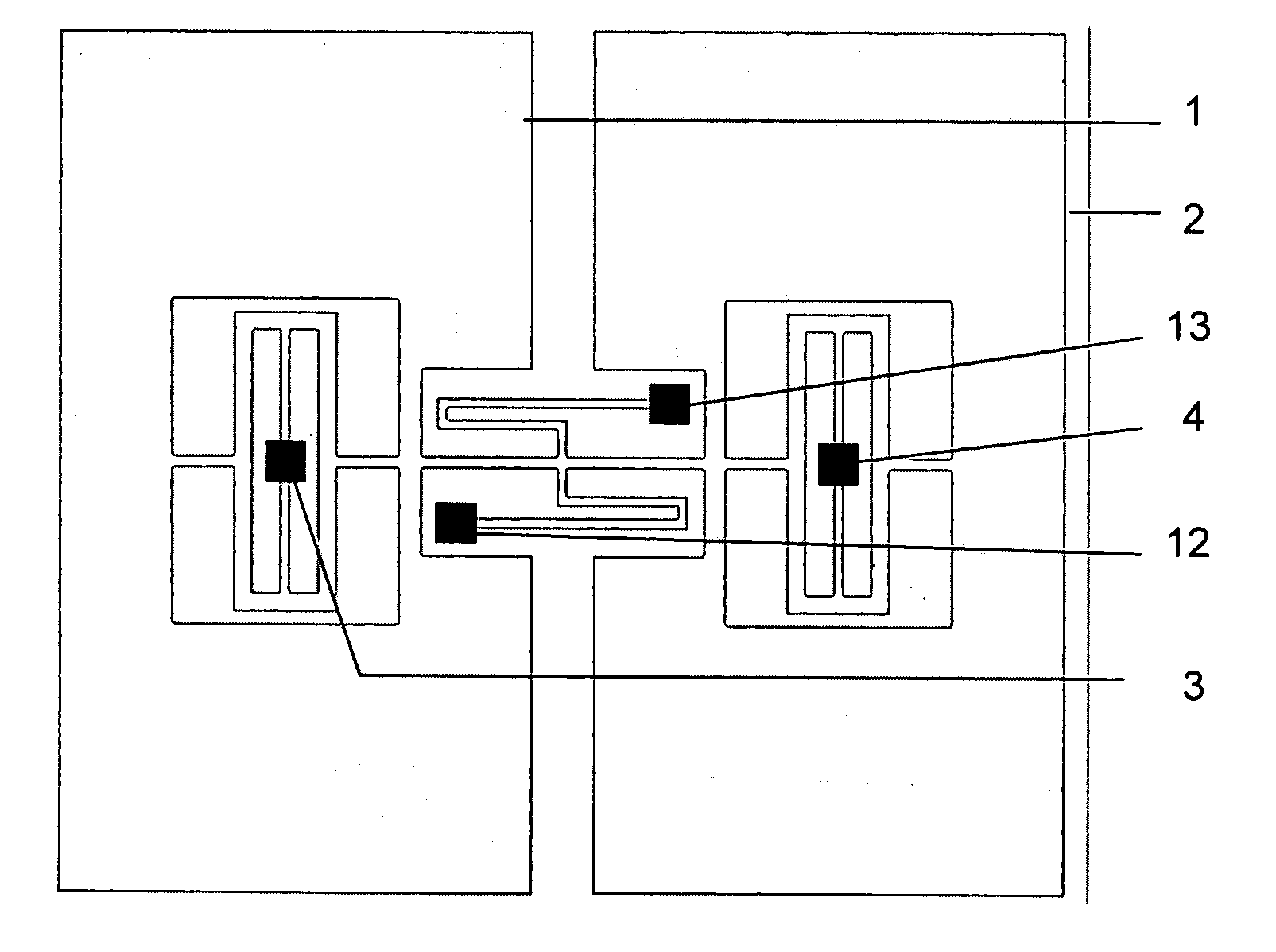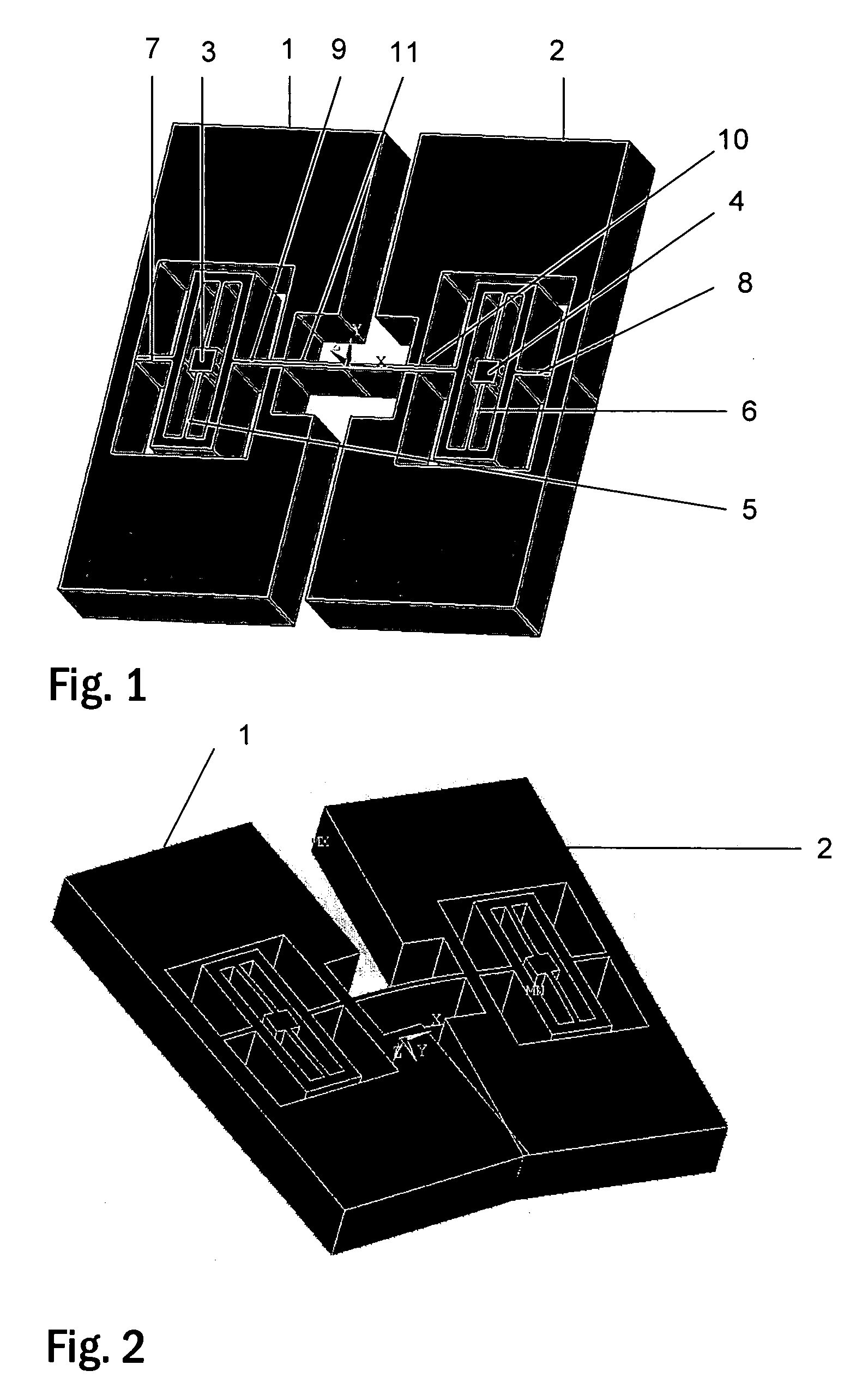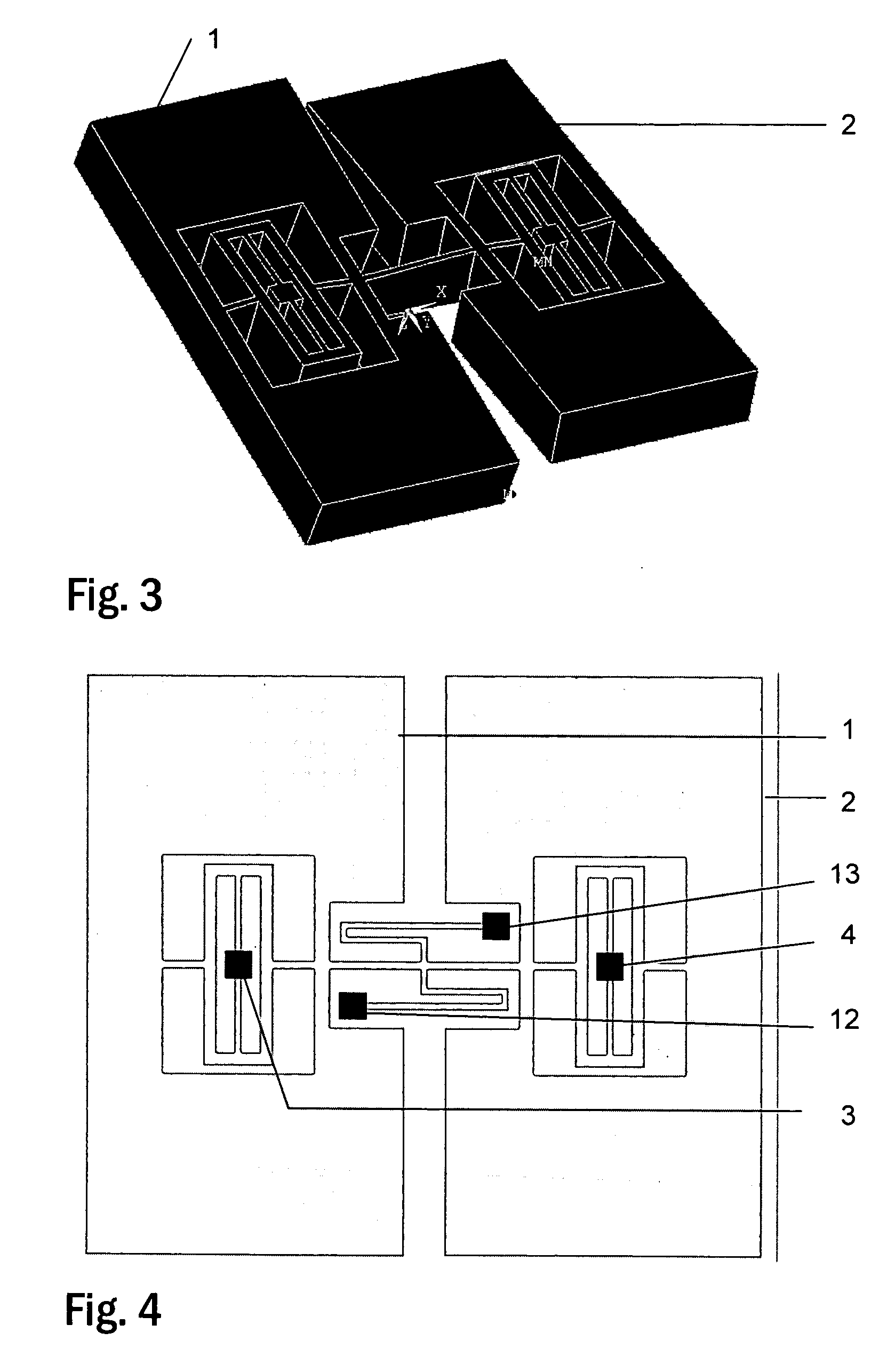Oscillating micro-mechanical sensor of angular velocity
a micro-mechanical sensor and angular velocity technology, applied in the direction of acceleration measurement using interia force, turn-sensitive devices, instruments, etc., can solve the problems of angular acceleration also to the axis of detection of the sensor, unavoidable disturbance of the resonator, and extremely tight requirements, so as to reduce the risk of mechanical interference and reduce the risk of interference. , the effect of reliable and efficient measuremen
- Summary
- Abstract
- Description
- Claims
- Application Information
AI Technical Summary
Benefits of technology
Problems solved by technology
Method used
Image
Examples
Embodiment Construction
[0043] In the sensor of angular velocity according to the present invention, the primary motion, which has to be generated, is an angular oscillation of at least two movable seismic masses in opposite phase about support areas attaching the masses to the body of the sensor component. There is at least one support area for each mass, and they are connected to the surrounding mass by means of springs, or by means of springs and stiff auxiliary structures, giving the masses a degree of freedom in relation to an axis of rotation perpendicular to the plane of the disk, and in relation to at least one axis of rotation in the same direction as the plane of the disk. The masses are connected to each other by means of at least one bending spring, which mechanically synchronizes their primary motion. Structures known in the art can be used for generating the motion.
[0044]FIG. 1 shows a perspective depiction of the structure of the movable masses of an oscillating sensor of angular velocity a...
PUM
 Login to View More
Login to View More Abstract
Description
Claims
Application Information
 Login to View More
Login to View More - R&D
- Intellectual Property
- Life Sciences
- Materials
- Tech Scout
- Unparalleled Data Quality
- Higher Quality Content
- 60% Fewer Hallucinations
Browse by: Latest US Patents, China's latest patents, Technical Efficacy Thesaurus, Application Domain, Technology Topic, Popular Technical Reports.
© 2025 PatSnap. All rights reserved.Legal|Privacy policy|Modern Slavery Act Transparency Statement|Sitemap|About US| Contact US: help@patsnap.com



